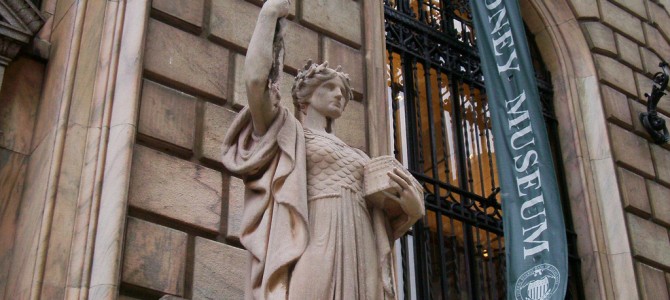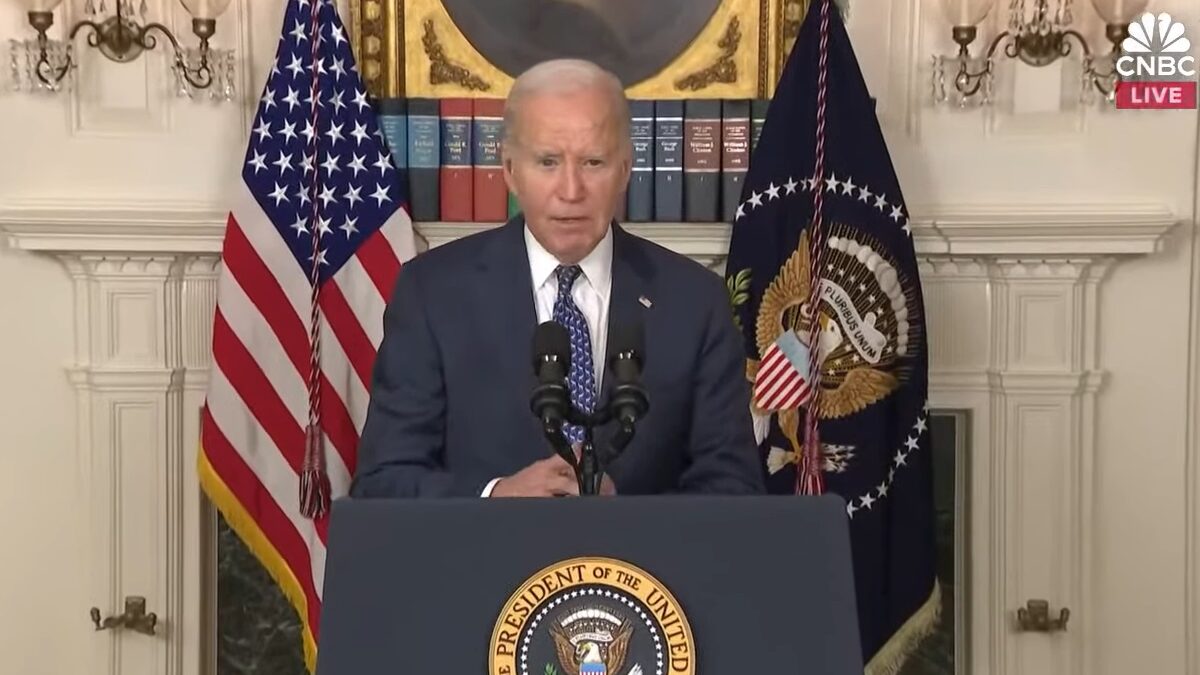
In the recent back-and-forth between The Federalist’s Sean Davis and the American Enterprise Institute’s Mark Perry and James Pethokoukis, Davis is right to worry about inflation. If you take the last four month’s Consumer Price Index (CPI, a measure of inflation that probably underestimates inflation) and annualize, inflation is now well above 4 percent—all while gross domestic product (GDP) growth has remained flat.
Yet there is a broader point here about the role of the Federal Reserve, and conservatives need to have this debate, or we ignore, at our own peril, the huge impact monetary policy has on America’s prosperity.
The undeniable truth is that we are living in a time of unprecedented action on the part of our Federal Reserve System. Never before have interest rates been kept this low for this long. Never before has such a huge program of money printing for bond buying been undertaken.
These easy-money policies bring serious side effects.
Manipulating Money
The Fed uses a number of policy-tools, primarily Open Market Operations, to manipulate credit availability, and thus, short-term rates (although this affects long-term rates, too). Right now the Fed has set interest rates at the lowest level in history, at zero-bound, meaning rates are kept as close to zero as possible. And these historically low rates could be kept low for a very long time—the Fed’s policy of “forward guidance” promises to keep rates low even after the job-market ostensibly recovers.
The policy tool of quantitative easing (QE), probably the most extreme measure the Fed has taken of late, involves the Fed creating money on its balance sheet (so far totaling almost $4.5 trillion) and then using this newly minted money to buy bonds (mostly U.S. Treasuries) in the secondary market. (The Fed buys the bonds from banks by crediting their accounts that sit at the Fed.)
This increased demand for U.S. government debt means that the “price” of those securities goes up, and the yield (interest rate) that an investor requires to hold the bond goes down. Because U.S. Treasuries are the foundation of the bond market, all bond yields, government and corporate, are artificially suppressed.
The idea behind these policies is that cheap credit (debt) will lead to greater demand, and thus curb the excesses of the business cycle. More specifically in the case of QE, it was hoped that cheap debt would allow firms to increase CAPEX spending (spending on investment and growth), which would in turn lead to more hires and a rebounding job market.
Direct Effects of Monetary Stimulus
Yet the labor participation rate is the lowest it has been since 1979, and the falling unemployment rate is more attributable to Americans dropping out of the workforce than to a burgeoning labor market (Social Security disability rolls have skyrocketed).
Although the effects of the Fed’s actions on Main Street remain negligible, QE has been successful in goosing the stock market. Cheap debt never boosted firms’ investment-spending as intended. Instead, firms took out debt to buy back their shares, pushing up valuations. Even better for the U.S. equities market, the Fed’s suppression of bond yields caused investors to pile into riskier assets that offered a higher return, such as higher-yielding (junk) bonds and stocks.
The Fed’s stimulus probably did reduce the impact of the 2008 subprime crisis, yet a deeper crisis probably would have allowed the economy to purge the excesses of the previous bubble, allowing for a faster (and real) recovery.
But regardless of the efficacy of the Fed’s actions during the financial crisis, its actions now—especially if we are in the midst of an economy that is already on the mend—seem to be a bit excessive. There will be unintended consequences.
The Side Effects of Monetary Stimulus
You simply can’t artificially keep rates this low for this long while printing almost $4.5 trillion (and counting) to buy bonds, and not experience inflation. To be fair to Perry and Pethokoukis, the CPI numbers they cited seem benign, but that’s only because the velocity of money is historically low. It is reasonable to think that velocity will eventually mean-revert.
Even more dangerous, easy credit creates inflation concentrated on specific asset-classes, a.k.a. asset-price bubbles. As debt becomes cheaper, and investors are pushed into riskier assets because of the Fed’s suppression of bond-yields, the prices of certain assets are bid up by the greater supply of money (caused by cheaper credit), without regard to underlying valuation.
These bubbles, like the one in housing that led to the 2008 financial crisis, can be even more harmful than a bout of inflation. Right now there is a bubble in stocks, in bonds, and probably in housing, too.
All of this means our current financial system is heavily dependent on the Fed’s recent actions. Because the Fed can’t continue its low-rate, money printing policies forever without sparking massive inflation, the bursting of these bubbles once rates rise is a possibility:
1) When interest rates rise, the value of already issued bonds will drop, because newer bonds issued will offer a higher return. This could cause a massive “rush to the exit” for bond investors, like someone yelling “fire” in a crowded theater—magnified because the Dodd-Frank Act curbs bond market liquidity by banning bank proprietary trading (and banks were the primary providers of bond-market liquidity prior to Dodd-Frank).
2) Likewise, equity markets will be severely affected when rates rise, as investors can receive higher returns from safer fixed-income investments. Emerging markets look especially vulnerable to this type of capital reallocation—look at what happened last summer: As rates rose abruptly in the United States over fears that QE would be ended, capital in emerging markets rushed back into American assets.
3) As rates rise, the Fed’s balance sheet will also take a hit. The Fed plans to smooth this problem by holding the bonds till maturity and not “marking the bonds to market” (assessing their real-time value). Yet many of the bonds the Fed has bought after “Operation Twist” are long-term bonds that don’t mature for another 10 or 15 years. A bloated Fed balance sheet for the foreseeable future breeds monetary uncertainty, and may cause the U.S. Treasury to sustain losses (as Fed gains and losses flow to the Treasury).
Most troubling, especially for conservatives, should be the fact that the Fed is the primary enabler of the national government’s current profligacy. When the Fed prints money to buy U.S. government debt, it devalues the spending power of the American people for the sake of allowing the government to borrow and spend more cheaply.
This means there are two options before us: either the Fed keeps printing money and tries to inflate away the U.S. government’s debt, essentially taxing us all through inflation to accomplish this, or the Fed raises rates and the U.S. budget deficit skyrockets. Even an increase of a couple more percentage points in interest rates would cause the U.S. budget deficit (the amount of money we spend every year more than we take in) to increase from $680 billion (in 2013) to well above $1 trillion.
Conservatives and The Fed
The bottom line: There is a gun to the head of the American economy. We can continue these easy-money policies that cause inflation, enable excessive government spending, and engineer more bubble-fueled financial crisis, or we can allow interest rates to rise, which would surely plunge the economy back into recession.
Either way, our current course is not sustainable. This is why conservatives need to hammer this issue out. My vote comes down on the side of upholding this country’s founding values—limited government, and free enterprise. That doesn’t mean we trash the Fed system altogether, but it does mean that we seriously rethink its role in America’s economy.
It baffles me that we can all agree placing price controls on bananas is wrong, inefficient, and causes adverse side-effects, but we have never questioned why it is a good thing for the Fed to place price controls on money. One thing is for certain. As a student of history, I know you can’t print your way to prosperity. It seems we are trying to do that just now.









